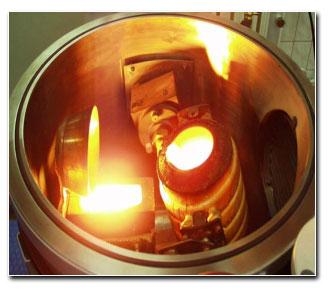Separated Rare Earth Oxides from Multiple Feedstocks

Innovation Metals Corp. (IMC) recently announced the initial results of a technical study on the production of separated high-purity rare-earth oxides (REOs) from a mixed concentrate derived from several mineral types. The rare-earth elements exhibit a range of unique electronic, optical, catalytic and magnetic properties.
Their use can have a profound effect on the performance of complex engineered systems and devices. At present, over 96 percent of rare-earth production occurs in China.
The technical study, funded by IMC and conducted at a leading rare-earth research institute in China, successfully demonstrated that high recovery rates of individual REOs could be achieved through the process. The initial mixed concentrate was produced from four separate feedstocks, each originally containing bastnaesite, monazite, xenotime and ionic-clay materials, respectively. The initial results also indicate that the process will work for feedstocks produced from other rare-earth-bearing minerals, too, and further work is ongoing to confirm this.
"This research has the potential to change the industry and will help rare-earth producers to come to market in the most efficient manner," said Patrick Wong, CEO of IMC. "The initial results reinforce our plans to serve the market through the creation of independent, centralized separation facilities, which will provide producers with an attractive new pathway to market, for separated rare-earth products produced via IMC's low-cost tolling program."
IMC's plans to provide end-use consumers of rare earths with the opportunity to own production capacity for the specific rare-earth products that they need, without being locked into fixed prices. IMC also plans to reserve a portion of its future production capacity to assist governments with stockpile programs.
"We look forward to inviting rare-earth consumers, producers, traders and stockpile program managers to participate in an IMC-led consortium," said Gareth Hatch, President of IMC. "Our partners will benefit from low-cost, independent separation facilities, providing security of supply coupled with innovative trading platforms, which will provide transparency and true price discovery to a sector that sorely needs it."
Wong added, "For end-use consumers of rare earths, investing in a single rare-earth mine is a poor use of capital. If they invest in a mine, in order to get the product they need, consumers are inherently investing in separation capacity anyways. By owning separation capacity instead, consumers can own production of only the elements and compounds that they need.
“In addition, the flow of information from a single separation provider benefits all end-users since it is difficult, for example, for permanent-magnet producers to know quite how the catalyst industry will affect them, and vice-versa."
China is currently in the process of consolidating its rare-earth industry, which was overbuilt with separation capabilities that are now running at less than 60 percent capacity by IMC's estimates. "History may repeat itself if producers do not find a more efficient way of bringing product to market," said Wong. "Some companies want to see that producers all have their own separation plants because they're in the business of building them -- but this wouldn't make much sense since processing would benefit from economies of scale."
Producers would benefit from using centralized separation facilities, since capital expenditures would be greatly reduced, and the low-cost tolling program would separate their concentrates into marketable product, potentially for less than the cost of doing it in-house. "It is a win-win situation," said Dr. Hatch.
IMC's next steps include the initiation of a feasibility study for the design of a centralized heavy rare-earth separation facility, to be located in North America. The company will engage a top North American engineering company for the project, which will include a site-selection process for placing the new facility in the most advantageous location possible. The company continues to work with Advanced Material of Japan Corp. and other partners in the development of separation capacity for light and medium REOs, to be located in Southeast Asia.





